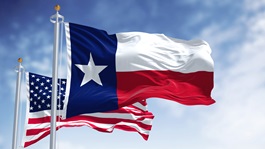
Publication
Year in review: Texas Business Court key discovery rulings
In its first year, the Texas Business Court has issued forty-two written opinions on a number of dispositive and discovery-related issues.


Author:
Publication | January 2017
On January 19, 2017, the Department of Treasury (Treasury) and Internal Revenue Service (IRS) issued final regulations (T.D. 9817) (the Final Regulations) clarifying the activities with respect to minerals or natural resources that generate “qualifying income” (Qualifying Activities) for publicly traded partnerships (also known as master limited partnerships, MLPs) under Section 7704(d)(1)(E) of the Internal Revenue Code of 1986, as amended.
On January 20, 2017, the White House issued a memorandum to the heads of executive departments and agencies ordering certain regulations that have been filed with Office of Federal Register, but not yet published, to be immediately withdrawn until such regulations have been reviewed and approved by the Trump administration. The Final Regulations were published in the Federal Register, after the date of the White House memorandum, on January 24, 2017, despite the regulatory freeze imposed by the White House memorandum. It has been reported that the IRS issued a statement that the Final Regulations were published with the approval of the Office of Management and Budget, and the IRS noted that the Final Regulations had an effective date of January 19, 2017, which preceded such regulatory freeze. The IRS also noted that the IRS pulled several pending regulations from the Federal Register at the time of the White House memorandum, but did not withdraw the Final Regulations from the Federal Register. Whether the Final Regulations may be withdrawn is unclear.
Due to concerns that the growing use of MLPs was eroding the corporate tax base, Congress enacted Section 7704 in 1987, which generally treats publicly traded partnerships as corporations for US federal income tax purposes. However, Congress provided an exception to such general rule by treating a publicly traded partnership as a partnership if 90 percent or more of its “gross income” for each taxable year is “qualifying income.”
On May 6, 2015, the Treasury and IRS issued proposed regulations (REG-132634-14) (the Proposed Regulations) clarifying the Qualifying Activities with respect to minerals and natural resources. As discussed below, the Final Regulations generally follow the approach of the Proposed Regulations with certain modifications based on public comments that the Treasury and IRS received.
The Final Regulations provide that Qualifying Activities are either “Section 7704(d)(1)(E) activities” or “intrinsic activities.” Discussed below is a high-level summary of certain modifications that the Final Regulations made with respect to “Section 7704(d)(1)(E) activities” and “intrinsic activities.”
The Proposed Regulations provided an exclusive list of activities that comprised the Section 7704(d)(1)(E) activities. In responses to public comments, the Final Regulations provide a non-exclusive list regarding Section 7704(d)(1)(E) activities by providing a general definition of each Qualifying Activity, followed by a non-exclusive list of examples of each.1 Consistent exceptions be narrowly construed, the Treasury and IRS do not intend for such non-exclusive list to be interpreted or applied in an expansive manner; instead, the Treasury and IRS explain that the Final Regulations should be interpreted and applied in a manner that is consistent with the plain meaning of the Final Regulations and the overall intent of Congress to restrict the “qualifying income” exception.
“Processing” and “refining”
Under the Proposed Regulations, there was a single definition for “processing” and “refining” that stated an activity was “processing or refining” if done to purify, separate, or eliminate impurities, but would not qualify if: (1) the MLP did not use a consistent Modified Accelerated Cost Recovery System (MACRS) class life for assets used in the activity (the MACRS Consistency Requirement); (2) the activity caused a substantial physical or chemical change in a mineral or natural resource (the Physical or Chemical Change Limitation); or (3) the activity transformed the extracted mineral or natural resource into a new or different mineral product or into a manufactured product (the Manufacturing Limitation).
Unlike the Proposed Regulations, the Final Regulations define “processing” and “refining” separately in order to better clarify what activities are Qualifying Activities. The Final Regulations looked to information compiled by the US Energy Information Administration (EIA) and modified the EIA list to more specifically identify those products solely produced by refineries and field facilities in order to provide a list of the qualifying products of a refinery for the definition of “refining” of natural gas and crude oil. In addition to separately defining “processing” and “refining,” the Final Regulations eliminated the MACRS Consistency Requirement and the Physical or Chemical Change Limitation. With respect to the Manufacturing Limitation, the Final Regulations no longer contain the specific language that made up the Manufacturing Limitation, but instead the specific definitions of “processing” and “refining” of natural gas and crude oil capture congressional intent by including only those activities that are generally performed at field facilities and refineries.
“Transportation”
The Final Regulations expanded the definition of “transportation” to include compression services, liquefaction and regasification of natural gas, and the sale of renewable identification numbers (RINs).2 Additionally, the Final Regulations replace the word “barge” with “marine vessel” so as not to limit marine transportation to one type of watercraft.
“Additional activities”
The Final Regulations introduced “additional activities” to Section 7704(1)(d)(E) activities. “Additional activities” consist of activities that are not exclusive to just one Section 7704(d)(1)(E) activity, such as cost reimbursements, passive economic interests, blending, and additization. Such “additional activities” are Qualifying Activities, and the Final Regulations clarify the extent to which these “additional activities” generate “qualifying income.”
The Proposed Regulations set forth three requirements for a support activity to be “intrinsic” to a Section 7704(d)(1)(E) activity: (1) the activity must be “specialized” to support the Section 7704(d)(1)(E) activity; (2) “essential” to the completion of the Section 7704(d)(1)(E) activity; and (3) require the provision of “significant services” to support the Section 7704(d)(1)(E) activity (the Intrinsic Activities Test). The Final Regulations did not modify the “essential” prong of the Intrinsic Activities Test, but modified the “specialized” and “significant services” prongs. With respect to the “specialized” prong, the Final Regulations specifically provide that the use of non-specialized property typically used incidentally in operating a business will not cause a MLP to fail the “specialized” prong. With respect to the “significant services” and “specialized” prong, the Final Regulations clarify that a MLP can meet such prongs through employees of affiliates or subcontractors so long as such employees or subcontractors are being compensated by the MLP.
William P. Bowers
Partner, Tax
Tel. +214-855-3903
bill.bowers@nortonrosefulbright.com

Publication
In its first year, the Texas Business Court has issued forty-two written opinions on a number of dispositive and discovery-related issues.
Subscribe and stay up to date with the latest legal news, information and events . . .
© Norton Rose Fulbright US LLP 2025